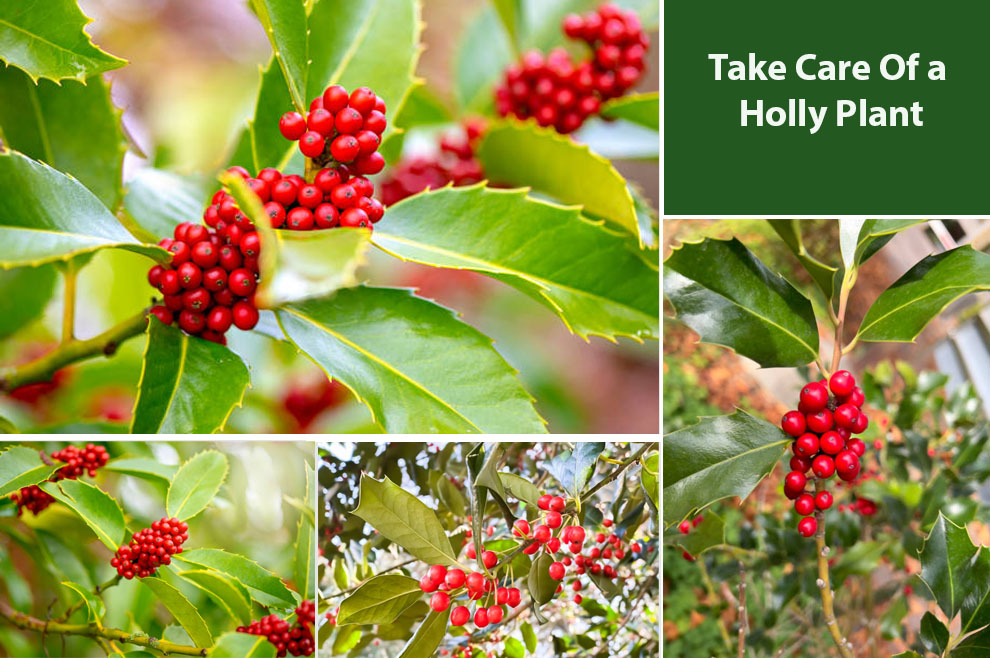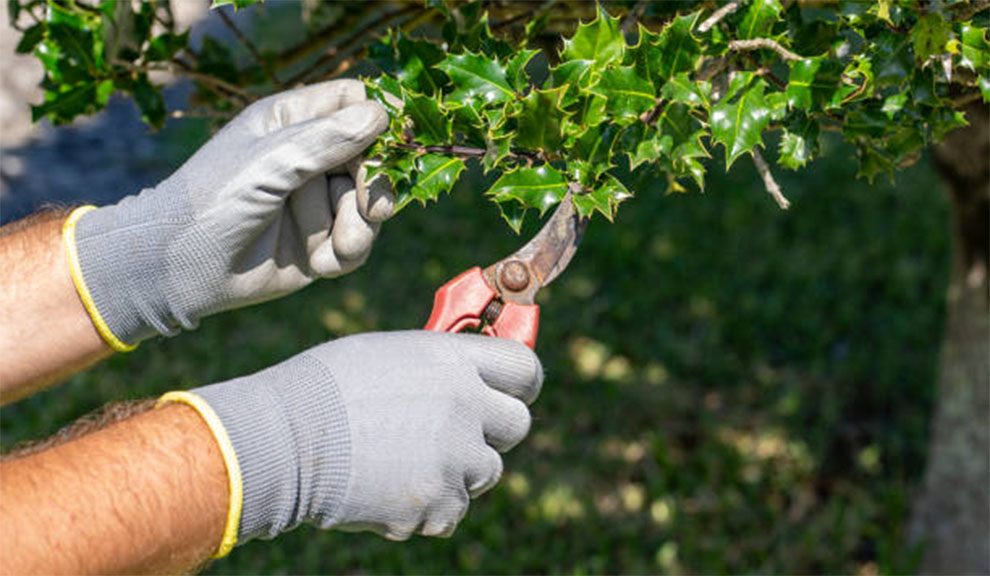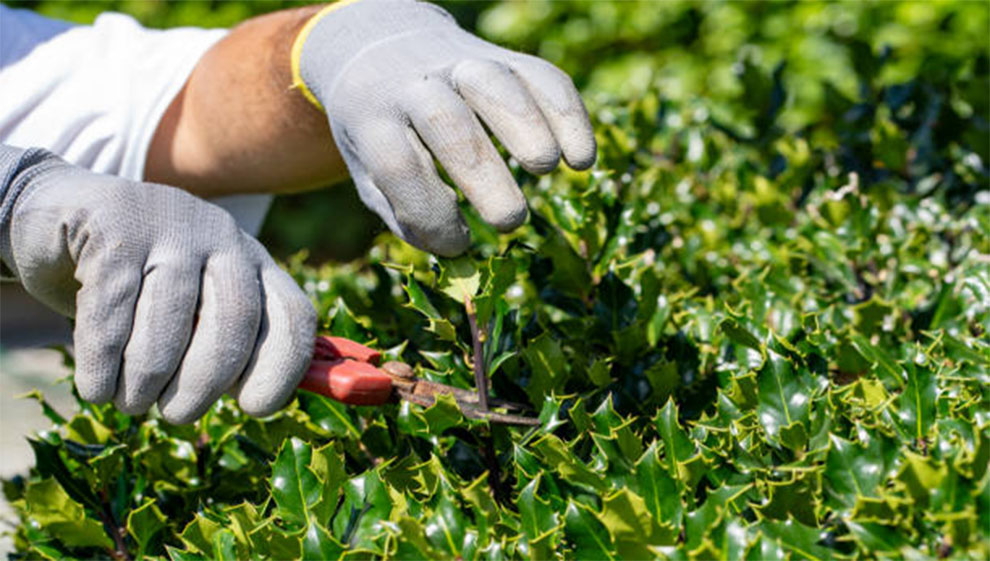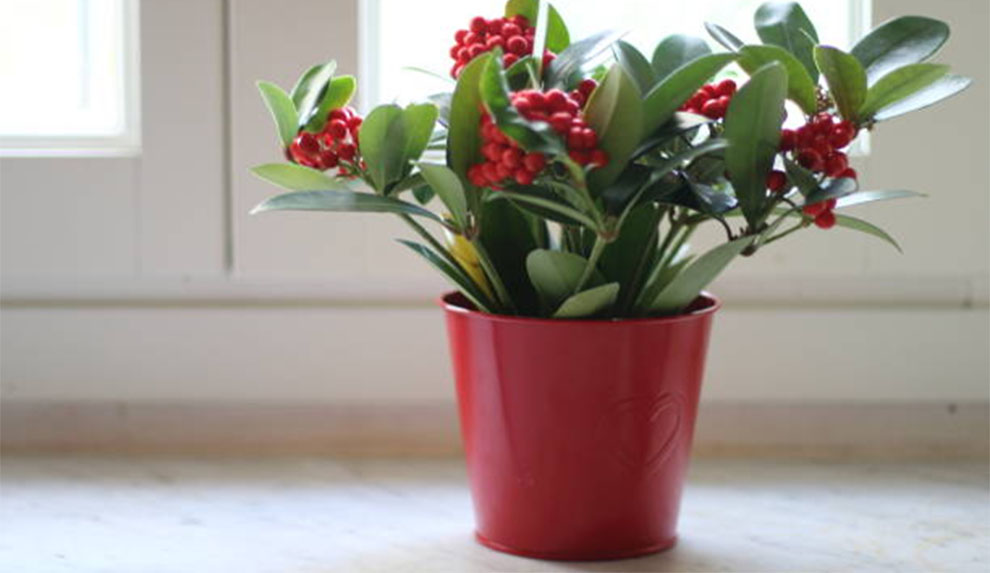Holly Plant Care: Essentials Of Planting & Growing Holly Tree Right
To care for holly plants, ensure their soil is well-drained, acidic (pH 5.0-7). Make sure they receive ample sunlight and regular watering as well. Lastly, prune to shape them in late winter and enjoy their evergreen beauty!

Holly Plants, known for their iconic red berries and vibrant green foliage, are typically considered low-maintenance additions to the garden. These hardy evergreens are known for their adaptability and versatility, making them a popular selection for landscaping.
The Holly plant care requirements include well-drained soil with good organic content, regular watering during the first year to establish roots, and an annual mulch layer to conserve moisture and suppress weeds.
Holly cherishes full sun to part shade. They need at least four hours of direct sun daily for optimal berry production and growth.
Pruning must be minimal, focused on removing damaged or dead branches and shaping. Pests and diseases are rarely a concern, but occasional monitoring is necessary.
With these basic care practices, your Holly plants can flourish and offer a year-round beauty and a festive touch during the holiday season.
How To Care For Holly Plant – An Overview
| Soil type and pH | Well-drained, acidic to neutral soil (pH 5.0-7.0). |
| Sunlight | Full to partial sun (at least 4 hours of direct sunlight daily). |
| Water | Keep soil consistently moist, avoiding waterlogged conditions. |
| Temperature | Cold-hardy: tolerates winter temperatures down to -10°F (-23°C). |
| Fertilizer | Use a balanced, acid-loving plant fertilizer to apply in early spring. |
| Pruning | Prune in late winter or early spring, removing dead or diseased branches and maintaining shape. |
Whether you grow Holly as a specimen tree, hedgerow, or a festive decoration, Holly can add a timeless charm to your outdoor space with little effort.
Holly Plant Care – A Detailed Guide!

In this comprehensive guide below, we will take you through the intricacies of caring for Holly plants, covering everything from the soil preparation to their sun, soil, and pruning requirements.
Let us start:
Location – Where to plant Holly?
Picking the right planting location is imperative for their overall health and vitality. Holly plants cherish well-drained soil with organic compost. They need full sun to partial shade.
When picking a spot, ensure it offers protection from strong winds, as the plant may be sensitive to the harsh gusts.
Further, consider holly plant’s moderate growth pattern and size, as some species grow quite large, whereas others are compact. Properly assessing these factors helps establish a conducive environment for the Holly plants to flourish.
Does Holly need a lot of sun?
Yes.
Holly plants need a significant amount of sun to thrive. They cherish full sun to partial shade, meaning they must get at least four hours of direct sun daily. Adequate sun is necessary for healthy growth.
It also aids in iconic red berry production and the development of vibrant vegetation. Insufficient sun may result in sparse foliage and reduced berry production.
Hence, when planting Holly, please pick a location with adequate sun exposure to maintain your plant’s overall appearance and health.
What kind of soil do Holly bushes like?
Once you are sorted with the location, it’s time to see if the soil in that area is suitable for holly bushes. Holly bush care routine includes planting them in well-drained soil rich in organic matter. Holly bushes prefer slightly acidic to neutral soil with a pH between 5.0 and 7.0.
The soil must be rich in organic matter and absorb moisture without becoming waterlogged. Further, adding peat moss or compost to the soil before planting can improve its nutrient content and texture, benefiting the Holly bushes.
Please avoid sandy or heavy clay soils. They may inflict drainage issues or poor root development. Proper soil preparation is vital to create a conducive environment for your Holly bushes, letting them establish a healthy root system and flourish with lush berries and foliage.
What temperature can Holly Bush tolerate?
Holly bushes are typically hardy and can tolerate diverse temperatures, depending on the specific variety. Most Holly varieties can withstand cold temperatures and are considered cold-hardy plants.
They can endure winter temperatures as low as -10°F (-23°C) or even lower, making them suitable for growing in many temperate regions. However, it is worth noting that extreme temperature fluctuations, especially in water, can be more damaging to Holly bushes than consistently cold weather.
Sudden temperature swings and strong winds can result in winter burn or damage to the foliage. To guard your Holly bushes during harsh winter conditions, consider applying a mulch layer around the plant’s base and offer wind protection if possible.
What is the best fertilizer for Holly bushes?
The right fertilizer is also imperative for good Holly bush care. Hence, pick a plant food specifically formulated for acid-loving plants, as Holly plants thrive in slightly acidic to neutral soil.
Pick a fertilizer with an NPK (nitrogen, phosphorus, and potassium) ratio, such as 10-10-10 or 14-14-14 blend. Further, a fertilizer suitable for azaleas, evergreen shrubs, and rhododendrons can also be a decent selection.
Further, you must apply the fertilizer at the right time. Feed Holly bushes in early spring, just before new growth spurts. Avoid late-season feeding, as it can stimulate new growth that may not have adequate time to harden off before winter, making the plant more susceptible to cold damage.
Read the manufacturer’s label for application methods and rates, and water the plants thoroughly after feeding. Over-feeding can harm the plants, so it is best to err on the side of caution and sparingly apply fertilizer.
Do Holly trees like lots of water?
Like several other plants, Holly tree care involves moderate and consistent watering, especially during the establishment period. However, the plants do not thrive in overly wet or waterlogged conditions.
Here are some general watering guidelines for Holly trees:
1. Establishment Phase: When initially planting the Holly tree, ensure that the soil remains consistently moist but not excessively saturated during the first year or so. It helps the tree establish its root system.
Water thoroughly and deeply when the first inch or two becomes dry. Ideally, you can water once a week.
2. Mature Trees: Once established, the Holly Trees are more drought-tolerant. So, you can lower the watering frequency, allowing the soil to dry out between two watering schedules. But always water-deep, ensuring adequate moisture to reach the root system.
3. Do not overwater: Holly plants do not like sitting in waterlogged soil. It may result in root rot and other issues. Ensure the soil has good drainage to avoid excess moisture accumulation.
4. Rainfall: Consider the natural rainfall when assessing the watering schedule. In the rainy periods, water it less frequently.
Strike a balance when watering Holly trees, offering adequate moisture for their needs without causing waterlogged conditions. Monitoring the soil moisture and altering the watering is pivotal for maintaining healthy Holly trees.
When and how do you prune a Holly bush?

Pruning is also a crucial aspect of Holly plant care. It helps promote healthy growth and maintain plants’ shape, leaving them neat and crisp. Here is a correct guide on pruning the bushes:
A. When to prune holly bushes?
Prune in late winter or early spring, ideally in early March or February end, before new growth emerges. It is the dormant window and ideal to shape and rejuvenate the plant.
B. Pruning Goals
- Begin by removing the damaged, dead, or diseased branches. Make neat, precise cuts at the base of the branches.
- Selectively prune branches growing out of bounds or crossing each other to maintain the desired size and shape.
- For bushier growth and a denser appearance, lightly shearing the outer foliage helps. But do not over-shear, as it may result in sparse growth.
C. Tools
- Use a clean, sharp looper or pruning shear for medium or small branches. For thicker ones, use a pruning saw.
D. Pruning Technique
- Make the cuts just above the bud or the leaf node and at a slight angle away from the bud. It enables the plant to heal better.
- Maintain the natural shape: rounded, pyramid, or any other form.
E. Clean up
Once done, remove the pruned debris and branches from the area for Holly bush care. It helps avoid disease or pest spread.
| Please know Holly bushes yield their vibrant berries on the female plants. So, be cautious while pruning to avoid removing excessive branches if you wish to cherish their classic red berries. |
What Diseases Do Holly Bushes Get & Ways To Manage Them?
Holly bushes are susceptible to diseases like leaf spot, powdery mildew, and root rot. Leaf spot causes dark spots with yellow halos, and powdery mildew is a white substance on the leaves.
You can manage them with good air circulation, proper spacing, and fungicidal treatments. Root rot is a fungal disease. It thrives in waterlogged soil. So, maintain well-drained conditions to avoid it.
Further, Holly plants may suffer from chlorosis because of nutrient deficiencies. You can cure them with apt fertilization. Regular inspection, prompt treatment, and ensuring optimal growing conditions are vital to keeping Holly bushes healthy.
Holly Tree Care In Pots

Caring for Holly trees in pots demands special attention. Pick a container with good drainage and employ a well-draining potting mix. Ensure the selected container can accommodate the tree’s mature growth.
Move the container to a location with partial sun, ensuring at least four hours of direct sun daily. Water regularly, letting the soil dry between two waterings.
Fertilize with a balanced, slow-release plant food in spring. Prune to maintain the desired shape, especially in late winter. Guard the pot from freezing temperatures by moving it indoors or wrapping it during winter.
Repot every few years to replenish the soil and promote healthy growth.
Commonly Asked Queries About Growing Holly Bushes
Ques 1. How to plant Holly bushes?
Ans. Pick a well-drained location for planting the Holly bushes with partial to full sun. Dig a hole twice as wide as the root ball and just as deep.
Place the plant in the hole, backfill with soil, and water deeply. After planting, Holly plant care includes applying thick mulching to suppress weeds and retain moisture. Water regularly during the first year to establish roots,
Ques 2. When is the best time to plant Holly bushes?
Ans. The best time to plant Holly bushes is during the dormant season, in late winter to early spring, before the growth starts. It allows the plant to establish its root system before the growing season.
Ques 3. How to take care of a Holly plant indoors?
Ans. Place the Holly in a bright, indirect light for indoor plant care. Keep the soil moist, not waterlogged, and ensure the pot has good drainage.
Maintain indoor humidity by misting the leaves or using a humidifier. Prune to control shape and size and fertilize with a water-soluble, balanced plant food during the growing season. Guard them from extreme temperatures and drafts.
